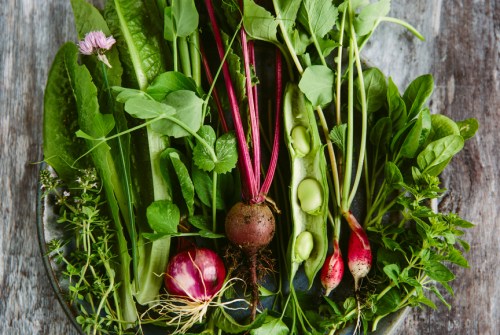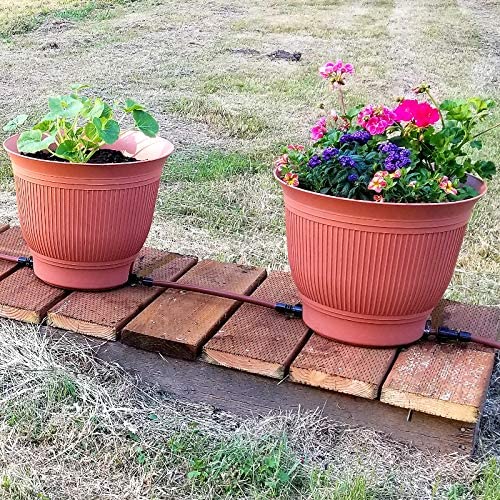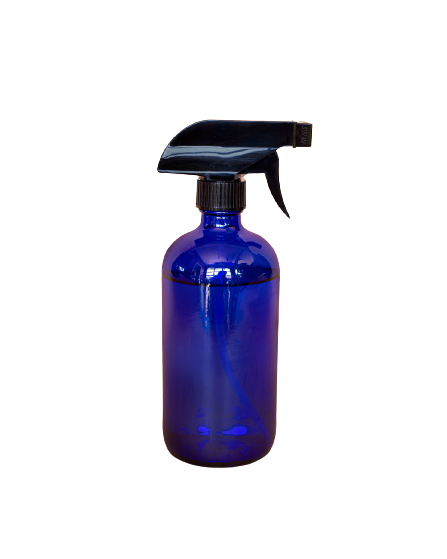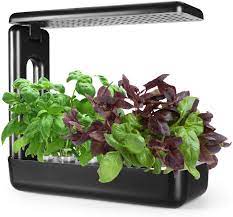Our editors independently select these products. Making a purchase through our links may earn Well+Good a commission
5 of the Easiest Vegetables To Grow in Your Garden
Growing your own vegetables is one of the easiest and most rewarding things you can do this summer. Here's how to grow your own produce.

Nothing tastes better than fresh and flavorful vegetables you’ve grown yourself—and you have the self-achievement to go along with it. With a little preparation, you’ll easily enjoy a homegrown harvest. Planting some of the easiest vegetables to grow is nothing short of rewarding.
Experts in This Article
Kelly Gordon is a gardening expert at Daisy Rain Garden Systems.
Ryan Smith is a gardening expert and the owner of Ant & Garden Organic Pest Control in Beaverton, Oregon.
Herb gardens are easy to set up, and by harvesting just a little bit at a time you’ll find yourself with fresh herbs for your kitchen all season long. They are perfect for small spaces like balconies, decks, or patios. Gardening offers a lot of benefits. First off, you can burn some serious calories if you put in the hard work and stay busy. “And you’ll appreciate the food you eat more because you’ve grown it, plus you know they’re healthier,” says Ryan Smith, gardening expert and owner of an organic pest control and weed management business.
Plus, gardening can be a fun and soothing activity within the self-care and healing space, so enjoy its cathartic effects as well as the delicious, tasty recipes you can make with your fresh new veggies.
What you need
Go with a starter kit for ease. “There’s no trenching, no tools, no expensive check valves or backflow prevention devices,” says Gordon. You can plant anywhere, no matter the distance to the water source. A tip? Containers are much more convenient for growing vegetables than traditional garden beds. “Container gardening is a popular way to grow fresh produce without requiring a large garden bed,” says Kelly Gordon, gardening expert at Daisy Rain Garden Systems. “Dirt handling and weeding is much easier in tight spaces and harvesting the vegetables is easy, too.”
The most common reason plants fail to thrive is a lack of water. So, as you set up make sure you are able to give your veggies enough water access. For any home garden you will need a garden fork, which turns soil, and a hoe. A flat hoe is ideal for veggies, says Smith. You also need a rake and shovel to whisk leaves and debris away, a wheelbarrow for moving heavier objects and soil around.
Choose a watering can that can be in metal or plastic (your preference) and some sturdy gloves. Towels will be good to avoid stains (on yourself) and to help when moving plants around the garden to different pots and areas. Then shop for pots, small or large (or both, depending on what you’re planting), and you’re set!
The easiest vegetables to grow yourself
1. Cucumber
“Give your cucumber sunlight and moist, fertile soil and it’s almost guaranteed they will thrive and yield productive crops,” says Smith. Summer is the ideal season to grow cucumber, as they are at their peak. “These vines grow quickly with minimal care, so they’re a great start for starting gardeners,” he says.
2. Zucchini
Growing zucchinis from seeds prove to be easy even for beginners, as long as they are grown under full sun and moist, fertile soil. “They also grow fast, and in around two months, you can expect to harvest your first round of harvest,” Smith says.
3. Radishes
There are two common ways to grow radish easily—either plant them in containers or sow seeds on the ground. “This root vegetable loves moist soil, so make sure to water them regularly and provide good drainage,” says Smith. “With minimal care, you can expect to harvest your radishes as soon as three weeks after you planted them,” he says.
4. Leafy Greens
Beyond being high in iron and fiber, leafy greens are also easy to garden because they have shallow roots. “This means they don’t require overly fertile soil; however, they love the sun and constant water supply,” says Smith. Kale and lettuce are usually ready to harvest thirty days after sowing—so keep that in mind when planning your gardening schedule and strategy.
5. Fresh Herbs
You can mix and match different herbs. “Just make sure you choose your herbs based on how much sunlight the pots will get,” says Gordon. Most herbs prefer being grown in direct sunlight, but some like parsley, chives, garlic, or marjoram will prefer a little shade. An exception is mint. “If you want to grow mint, then give it its own pot, otherwise it will grow at the expense of everything else in the pot,” says Gordon
Shop These Vegetable Gardening Picks

Daisy Rain Garden Systems Self Watering Sprinkler Pot Kit — $149.00
With sprinkler pots, you only water what is inside the pot, so there is far less weeding and controlling pests like slugs and burrowing animals around to make gardening more efficient and simple. It is a great substitute for traditional micro-drip irrigation without any of the downsides such as clogging or damaged drip lines. Just attach to any standard water hose for simple, stress-free watering.

“This terra cotta pot is just the perfect home to my herbs,” says Smith. At a reasonable price, this terra cotta pot comes in multiple sizes and includes a drainage hole and tray to prevent overwatering. It is the ideal, petite pot to grow fresh herbs!

RAINPOINT Sprinkler Timer — $30.00
A hose end timer can help you maintain your plants’ hydration.“Add a simple hose end timer, available at most hardware stores, and the consistency will help your plants produce the best vegetables possible,” says Gordon. This one comes in a one or two hose option.

IKEA Vatenkrasse Watering Can — $20.00
This pick by gardener and a landscape designer Bryan McKenzie is convenient and efficient. This compact watering can is also aesthetically pleasing. This is great for plants that you are growing indoors.

Tula Plants & Design Spray Bottle — $8.00
Depending on your budget, you can either choose to spray your indoor plants to maintain the right humidity level or get an electronic air humidifier. “This is especially important during the cold seasons as heating dries the air too much,” says McKenzie. Using a smart humidifier, you can adjust an automatic routine to let your plants grow well when you’re at work all day long.

PlantX Moisture Meter — $10.00
This elementary device is cheap and saves a lot of time by setting you free from guesswork. “Just check the plants in your containers and outdoor patches to see if it’s time for some watering,” says McKenzie. This basic moisture meter is a reliable and accurate device for this purpose. “I’ve been using mine both outdoors and indoors for over 2 years already,” he adds.

VegeBox Indoor Herb Garden — $63.00
Try a starter kit to make growing your plants at home easier. This one fit nicely on your kitchen counter and has a light, as well as other “smart” features to make sure your plants grow according to plan and get the love and attention they need. It comes in a small and large model.
Want to be the first to hear about the latest (and greatest) SHOP product drops, custom collections, discounts, and more? Sign up to have the intel delivered straight to your inbox.
Sign up for the Well+Good SHOP Newsletter
Get exclusive deals on wellness, beauty, fitness, and food products that have been hand-picked by our editors.
Got it, you've been added to our email list.







